The songs featured on this list are from “obscure” European rock bands, from what I consider, arbitrarily, as the “third-tier” and “fourth-tier” of success. These guys were big enough to sign a record deal, get a video or two made, perform as the opening act for “second-tier” groups. But they failed to achieve consistent, sustained success. They didn’t headline stadiums or gain traction on MTV. Their work wasn’t mainstream when it was new, forty years ago. Now, these songs are relics, fading fast. I’ve done my part here to curate and promote work that deserves to be remembered. Here are a few of my favorite “obscure” European rock songs from the 1980s.
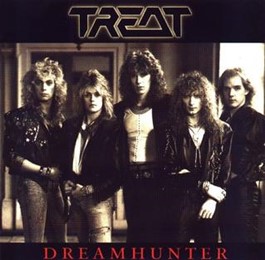
Treat, “World of Promises” (Dreamhunter, 1987)
Swedish rockers Treat released “World of Promises” on Dreamhunter in 1987. The song is best remembered as being covered by Swedish death metal band In Flames—a band that has achieved widespread success. I appreciate In Flames recognizing “World of Promises” for what it is, a masterpiece of the genre, but the death-metal version ain’t quite the same. Check out the original.
“World of Promises” explores a much deeper subject matter than most of Treat’s contemporaries. Whereas most hair metal bands were happy to consider sex, drugs, rock and roll, “World of Promises” is (I assume) about refugees.
They come from a land where the sun don’t shine
Running away from the cold
They travel so far in the name of love
Hoping their dreams will come true
Refugees, right?
Regardless, it’s top-notch. The pre-chorus builds perfectly into a sing-along chorus. The song’s bridge has one of the best break-down/build-ups out there. Plenty of synth, complementing plenty of guitar.
The music video is so rare I can’t even find it at the moment. It’s a great video. (If you have it, please send to me). You’d think a song about refugees would feature, like, refugees. Or maybe the band performing forlornly, against a concrete backdrop. No, they went with a hot chick exercising and then showering off. It’s counterintuitive but it works. It really, really works.
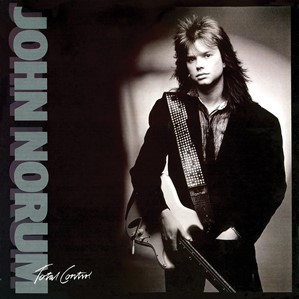
John Norum, “Back on the Streets” (Total Control, 1987)
Best remembered as a founding member of the band Europe, Swedish guitarist John Norum released his first solo album, Total Control, in 1987. The album title is likely a dig at his former band, which Norum departed after their career-defining Final Countdown release and tour.
“Back on the Streets” is a groover. A bluesy bass line holds the thing together while Norum drives. The chorus is distinct for it’s high-pitch and lack of backing vocals—it’s just singer Goran Edman belting solo—and it works surprisingly well. The song also deploys a “bell” sounding synthesizer, without shame, for a fun little hook.
The supporting music video is a hidden, shining, brilliant gem. The premise: Norum, decked in a cool-kid varsity jacket and New Balance sneakers, is robbed of his guitar—a gorgeous off-white, custom-made superstrat—hours before his sold-out concert. So, he searches the city’s (Stockholm’s?) thrift stores for his guitar. Finally finding it, he trades his varsity jacket for the guitar, returning to the stage just in time for a simple, bluesy guitar solo, in which Norum, true to his nature, picks nearly every note.

Bonfire, “Sleeping All Alone” (Fireworks, 1987)
German band Bonfire was originally called Cacumen. Undoubtedly, the name change was part of an effort to access the American market. Another part of that effort: “Sleeping All Alone,” a single from their 1987 album Fireworks.
It’s a simple song, full of power chords, and somewhat generic lyrics. But it feels good. And it has an epic, epic chorus. The chorus is a marvel of sonic engineering. God, it just sounds so good. It’s smooth and soft but somehow packs a punch. There’s no mistaking the thing as anything but a rock and roll chorus from 1987.
Not surprisingly, Joe Lynn Turner of Rainbow and Yngwie fame, co-wrote the song. Turner is a world-class vocalist with a proven track record of writing hits for serious bands hoping to access the mainstream. I would love to hear him sing this song.
The effort to crack into the US market was not entirely successful. Bonfire never made it big. And I’m gonna wager a guess that the more die-hard heavy metal fans didn’t appreciate a song like “Sleeping All Alone,” which was probably interpreted as a sell-out. Man, you’ve got to be a special type of cynical to turn your nose up at this song and this chorus. Just enjoy it for what it is.
Bonus points for casting one of my biggest adolescent crushes in the music video.

Raven, “On and On” (Stay Hard, 1985)
“On and On” actually cracked the Billboard 100, marking the high-water mark for Raven’s commercial success (and for any song on this list). Raven was a British three-piece, perhaps best remembered for bringing Metallica on their first ever national tour. Raven headlined if you can imagine that.
Raven, a British band, released “On and On” as a single from the fourth album, Stay Hard. As the album title suggests, Raven has a Spinal Tap thing going on. The band is not particularly talented, but they compensate with energy—and in this case, a good song. The song resonated more with high-school-me than with grad-school-me, but the catchy chorus paired with a winking “Fuck Off” attitude still lands.
Hockey fans will get a kick out of the drummer, who rocks a super-rare, super-dated Cooper XL7 hockey helmet for the video.
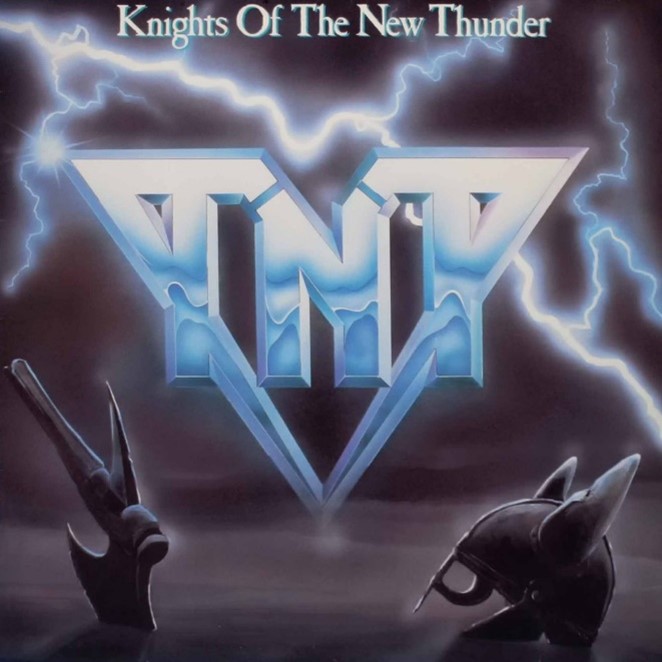
TNT, “Seven Seas” (Knights of the New Thunder, 1984)
With content reminiscent of Yngwie Malmsteen’s “I Am a Viking,” TNT’s “Seven Seas” was released on Knights of the New Thunder in 1984. The song pays homage to TNT’s Norwegian lineage:
Long ago we sailed with fury
Across the oceans of the world
The legend lives, it stays forever
We are ready so beware
Fucking rights, boys.
Very 80’s. Very Norwegian. Very Dungeon & Dragons. Knights of the New Thunder would be TNT’s last venture into “traditional” metal, before pivoting into a more commercially viable “glam” metal sound. TNT’s softer, later stuff is glorious in its own right, but “Seven Seas” is a jam.
“Seven Seas” features newcomer, American vocalist Tony Harnell—who’s opera-singing mother trained him well. Harnell’s opera pedigree is obvious. He maintains power and clarity in the upper registers, without ever sounding shrill or shrieky. He’s a unique talent. And Ronnie Le Tekro might be the coolest guitarist you’ve never heard of. He keeps it pretty simple but with a distinctive tone and style. He relies heavily on pinch and artificial harmonics, without ever sounding abrasive or too “showy.” And he does an excellent job of filling out the track—sometimes a tall order for a single guitarist. His solo work sounds like it probably inspired DragonForce guitarist Herman Li, who has achieved much wider acclaim.
Check out the video. The low budget didn’t hamper anyone’s ambition. The crew tries to recreate a Nordic environment using black tarps in low lighting to emulate the surface of a dark, stormy sea. Fucking rights, boys.

China, “In the Middle of the Night” (Sign in the Sky, 1989)
A Swiss band named China probably wouldn’t fly today. The Woke Mob would cry “cultural appropriation” and campaign for cancellation. Anyways, this article isn’t about the culture wars—it’s about obscure European hard rock from the 1980s.
“In The Middle of the Night” charted well in China’s native Switzerland (and Germany), but most rock consumers have never heard of it. Released on 1989’s Sign in the Sky, “In the Middle of the Night” was actually recorded in New York City. The song is wonderfully dynamic. A stripped-down verse builds subtlety, with a string synth undercurrent, into a fun, catchy chorus: In the middle of the night! In the middle of the lonely night! I’m not sure which guitarist lays down the solo—Claudio Matteo or Freddie Laurence—but whoever it is uses distinct phrasing and great staccato technique.
The song is uniquely atmospheric and almost eerie—it deserved better lyrics. Always on my own, I’ve been spending too much time on my own doesn’t do the first-rate music justice. This thing is a few more carefully crafted lines away from being a masterpiece.
The video is odd. They went with a China theme, but they didn’t have the budget to get over to, or recreate, China. Cheap music videos are regularly awesome. But the end result here looks like a low-quality travel ad or something. It’s just Asian women, in various state of undress, smiling for the camera, interspersed with the band performing. The video is redeemable for its “camp” factor, but, frankly, I think I could have made a more compelling video with a thrift-store camcorder and a free afternoon.
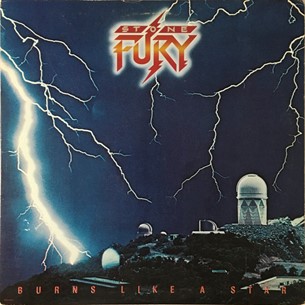
Stone Fury, “Break Down the Walls” (Burns Like a Star, 1984)
Man, this song is good. Technically, Stone Fury is an American band. But lead singer/rhythm guitarist Lenny Wolf (born Frank Wollschlager) is German and that’s close enough for this list. Lenny is best remembered as the frontman for German-band Kingdom Come who had a brush with mainstream success, but was maligned as a Led Zeppelin rip-off.
“Break Down the Walls” is a masterwork of dueling guitar interplay. The lines are busy, yet complementary. Other, more prominent, two-guitar acts like Judas Priest, Iron Maiden, and Metallica should take note at how Lenny and American lead guitarist Bruce Gowdy play off each other.
The song covers familiar rock territory: being told you can’t but going for it anyway. Here it feels fresh, sincere, and motivating—likely due to the perfect guitar work.
The video is fun, too, featuring a four-minute synopsis of the band’s arc from formation to rehearsal to recording to a climactic live show in front of their adoring fans (all ten of them). The band is charming and very “regular” in an unaffected way. They wear street clothes, hang out at home, and talk on the phone. The drummer looks like he’s someone’s uncle. Sure, none of that is particularly distinct, but for “Break Down the Walls” it feels like the camera is just peeking into the daily lives of aspiring musicians in the middle 1980s. The video feels like an honest time capsule, valuable as a form of historical preservation.
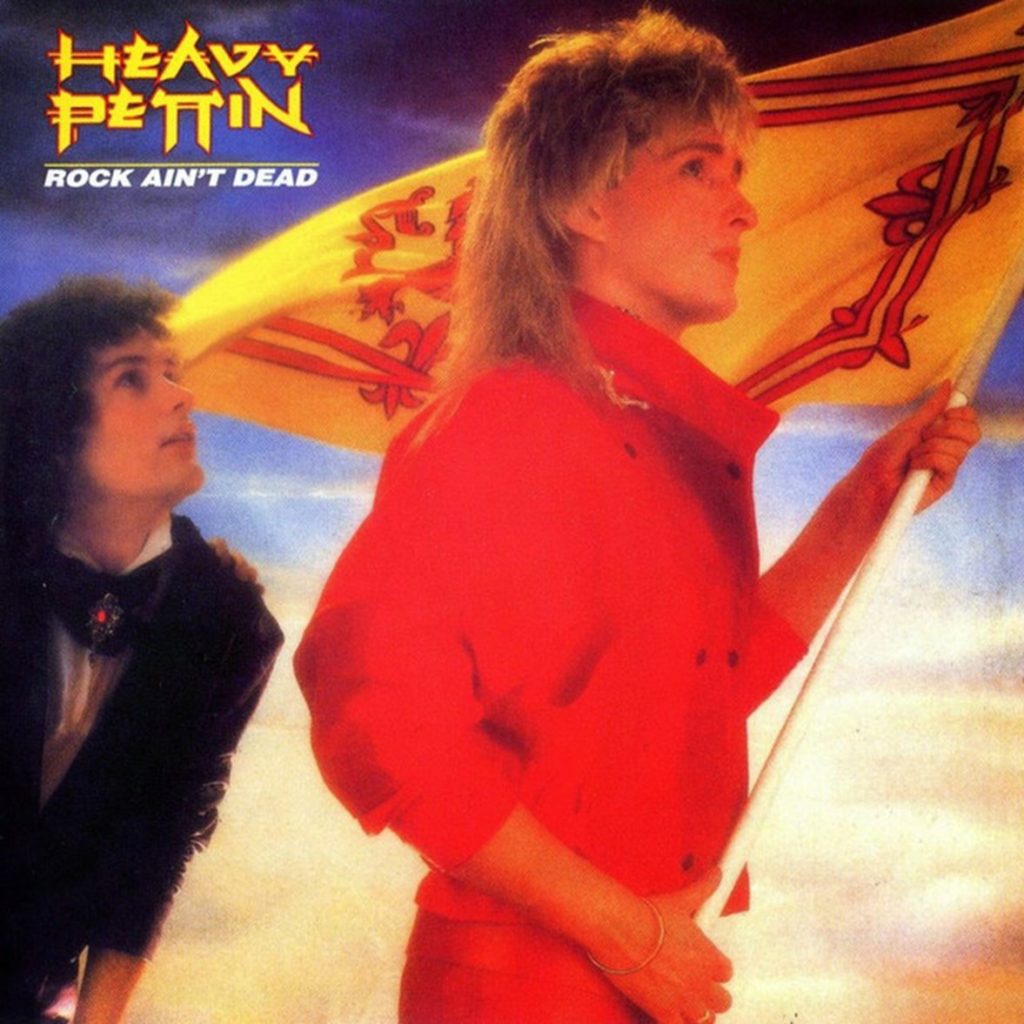
Heavy Pettin, Sole Survivor (Rock Ain’t Dead,1985)
Scottish band Heavy Pettinreminds me of a stripped-down, lower-budget Def Leppard. Here, on the title track from Rock Ain’t Dead, Heavy Pettin stacks hook after hook after hook. Sincerely. There’s a pre-chorus…and then there’s another pre-chorus…and finally the chorus arrives over the brilliant hammer-on/pull-off guitar line from the song’s intro. The song structure reminds me of Def Leppard’s “Foolin,’” which of course was a mega-hit. Heavy Pettin front man Steve Hayman even sounds a bit like a less powerful, nimbler version of Def Leppard’s Joe Elliott.
The band really leans into the call-and-answer vocal scheme, with effective results. And the group vocals, which drive the entire song, are pleasing, despite their relative rawness. It sounds like a bunch of dudes at a bar—rather than a professional recording effort—but it hits right.
The entire album is worth a listen. The songs sound similar but they’ve got a winning formula. The band records their songs, and swaggers around their videos, with a confidence that seemed destined for wider success. They never quite got there unfortunately. I hope this stuff has had more lasting power back in Glasgow than here in the US. It deserves an audience.
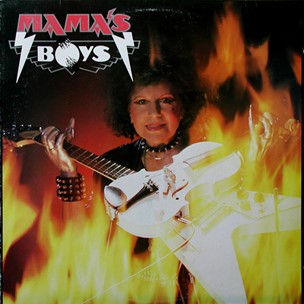
Mama’s Boys, “If the Kids are United” (Mama’s Boys, 1984)
I tried to talk my younger brother into learning the bass, so that we could do what the McManus brothers, aka the Mama’s Boys, do here.
The brothers keep things really simple on “If the Kids are United.” But the results have staying power. The band, from Northern Ireland, dives into familiar rock territory:
They can lie to my face
But not to my heart
If we all stand together
It will just be the start
Typically, this sort of fare is about the rock community—a group that generally identifies as outsiders. Certainly, that’s the case here. But I wonder if there’s not some deeper, double meaning relating to Northern Ireland and The Troubles.
The song is infused with genuine, youthful enthusiasm. The video, featuring a working-class apartment complex full of gritty looking kids “rocking out,” stays close to the songs title. It hits home. Especially if you’re watching for the first time as a fifteen-year-old. As an adult, I can appreciate that this flawed song—which sounds like three brothers wrote and recorded it in their mom’s basement—is packed with sincere optimism. With halting, oddly formed verses, the Mama’s Boys get the point across.
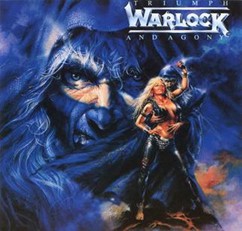
Warlock, “All We Are” (Triumph and Agony, 1987)
When I blast “All We Are” in our Subaru, my girlfriend complains that the chorus is repetitive. Well, when a chorus is fucking awesome, you lean into it, baby. Just enjoy it, darlin’—we’ll get to your Kenny Chesney soon enough.
She’s right of course. Most of the three-minute song is the chorus on repeat. And the chorus itself is repetitive: All we are, all we are, we are, we are all, all we need! Thick and resonating, the chorus is a booming chant that sounds like something from central Europe.
Warlock is from West Germany. Their lead singer, Doro Pesch, is the main attraction. She’s a talented rock vocalist, with plenty of texture and huskiness. She’s also exponentially more attractive than the grizzled, hard-rock standard, set by dudes like James Hetfield, Klaus Meine, and Blackie Lawless.
“All We Are,” released on 1987’s Triumph and Agony did get into MTV Headbanger’s Ball rotation—making the song less obscure than the others on this list. Mark Rezyka, one of the industry’s most prolific music video directors, shot the video. The premise: the wizard featured in the album’s cover art freezes interstate traffic. Then, Warlock holds a concert on the roofs of the frozen vehicles, blowing up the occasional Buick with shockwaves from their guitar amps. Fuck, yeah.
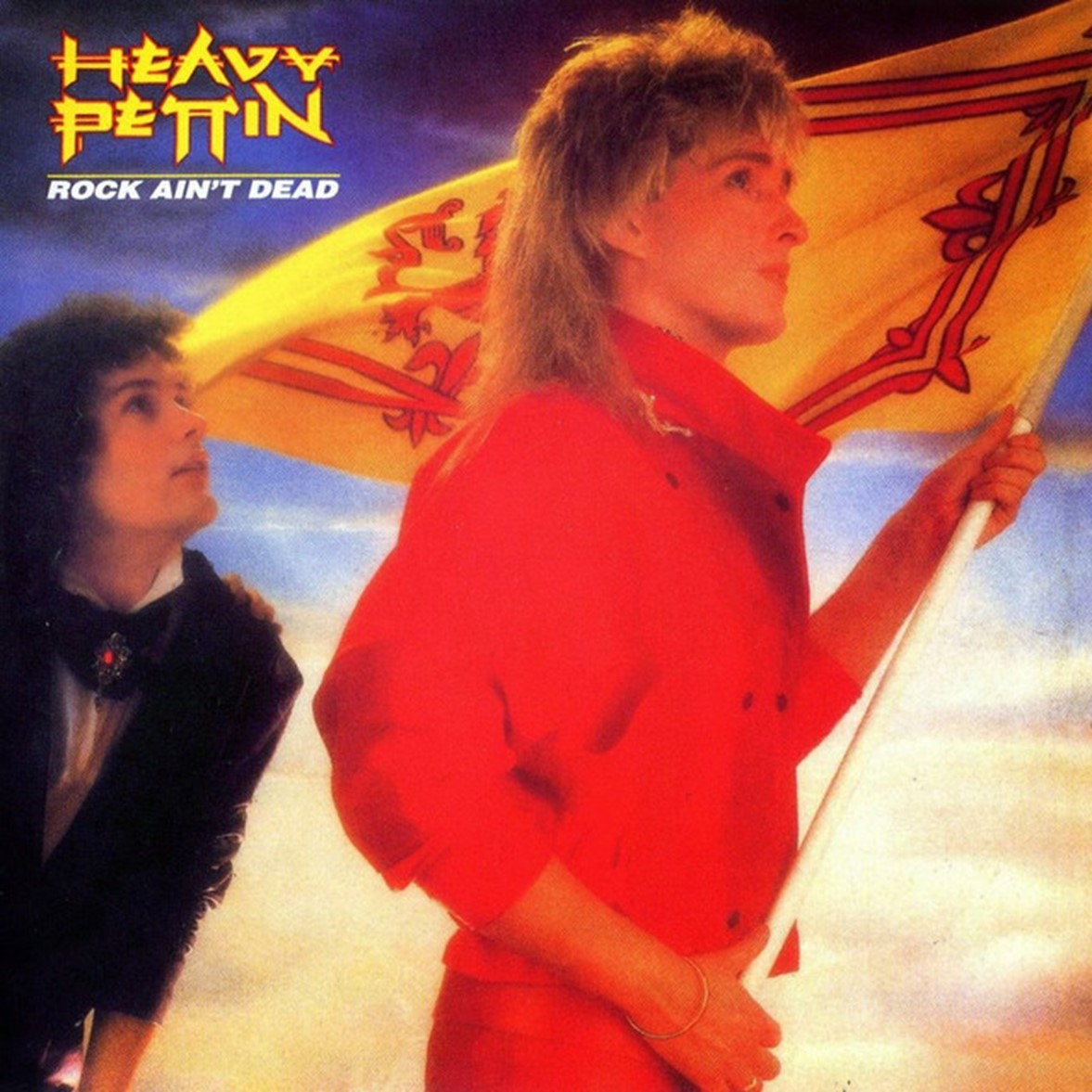
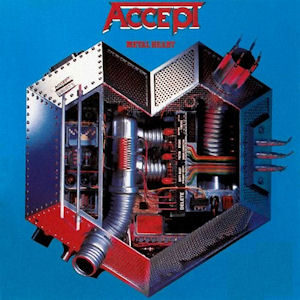




Be First to Comment